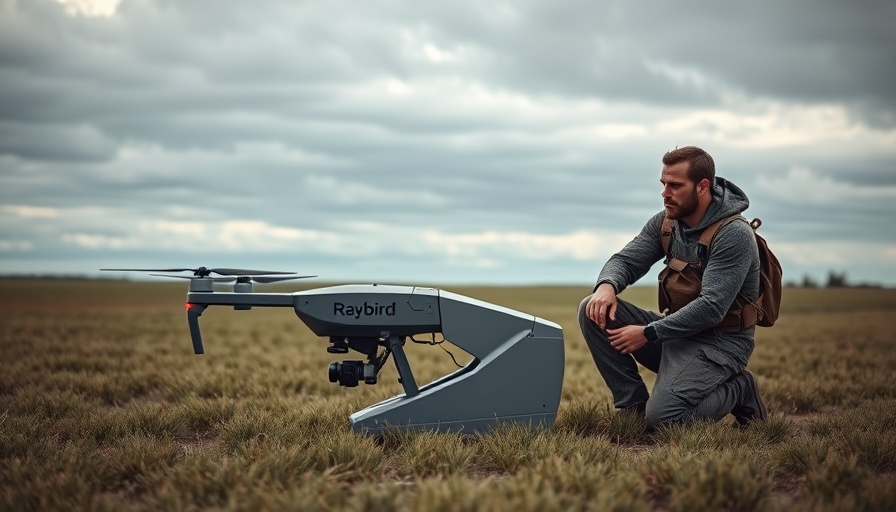
Skyeton and Allies Join Forces to Fortify European Defense
In a significant move for European defense capabilities, Ukrainian-born aviation manufacturer Skyeton has teamed up with Polish defense solutions distributor Allies to deliver the highly regarded Raybird UAS in Poland. This partnership not only marks a strengthening of regional security efforts but also highlights the growing collaboration between Ukraine and Poland, particularly in the face of emerging global threats.
The Raybird UAS: Proven Performance in the Field
The Raybird UAS, with over 350,000 hours of combat-proven operational experience, was previously adopted by the Armed Forces of Ukraine, where it's known as the ACS-3. Its impressive features include an endurance of over 28 hours, long-range reconnaissance capabilities, and versatility that allows it to undertake various missions from border surveillance to disaster response. Such robust specifications make it a valuable tool for both military and civilian applications, reinforcing its position in the unmanned aviation sector.
Strategic Implications for Poland's Defense Sector
This distribution agreement signifies more than just a business transaction; it embodies a partnership rooted in a shared vision for regional security. Pavlo Shevchuk, International CEO of Skyeton, articulated this collaborative spirit when he stated that "this partnership... reflects a shared commitment to technological excellence and the security of our region." His remarks underscore how the alliance aims to enhance operational readiness and resilience against potential threats from eastern adversaries.
The Growing Relationship Between Poland and Ukraine
The defense industries of Poland and Ukraine have long been linked by historical ties and mutual interests in stability. By integrating advanced drone technology like the Raybird UAS into their military operations, both countries can bolster their defenses while also fostering a spirit of collaboration that is essential for NATO’s Eastern Flank. This partnership also exemplifies how modern threats can catalyze international cooperation and technological exchange.
Expanding the UAV Market in Europe
As drones continue to revolutionize defense and civilian landscapes, the collaboration between Skyeton and Allies comes at a crucial time for the expanding UAV market in Europe. With a growing demand for advanced aerial technology, this strategic partnership offers a pathway for both companies to enhance their product portfolios and cater to the rising need for innovative, mission-ready solutions.
What This Means for Future Endeavors
Looking ahead, the partnership between Skyeton and Allies is poised to open doors for further developments in unmanned aviation. Both companies are committed to delivering state-of-the-art capabilities that meet rigorous operational standards, driving the industry towards a future that promises not just innovation, but safety and efficiency in mission-critical operations.
In conclusion, as technological advancements redefine the defense landscape, the collaboration between Skyeton and Allies serves as a bright illustration of how partnerships can lead to greater security and operational excellence in a rapidly changing world. Interested readers can stay informed about the latest developments in UAV technology and defense collaborations.
 Add Row
Add Row  Add
Add 




Write A Comment